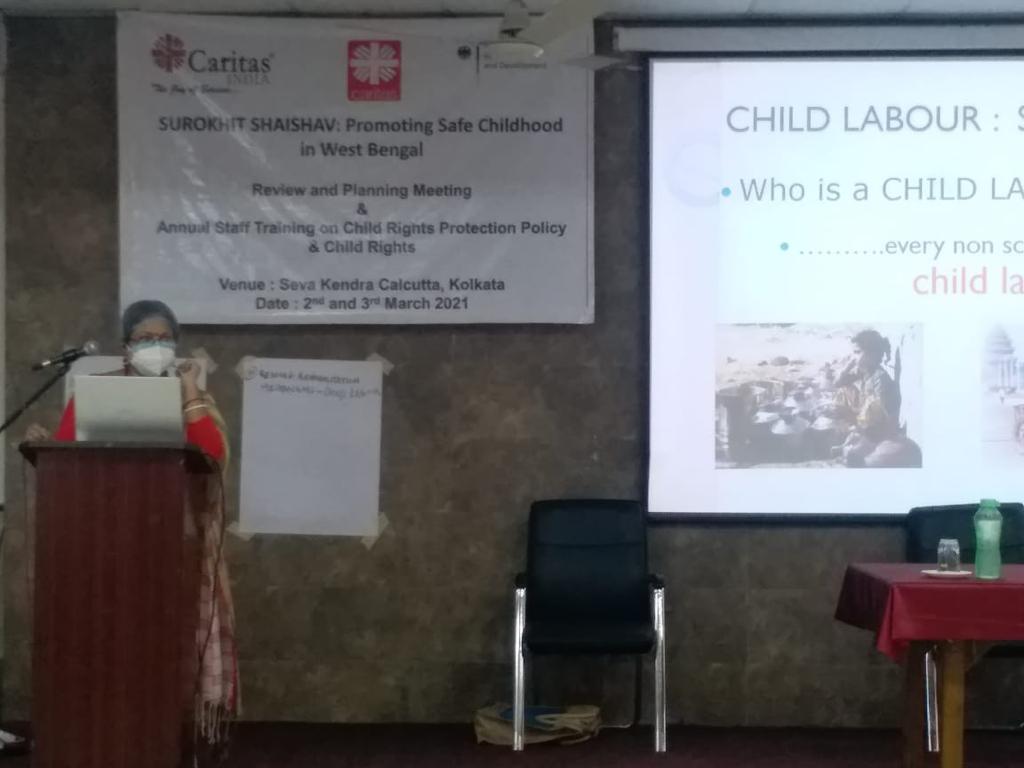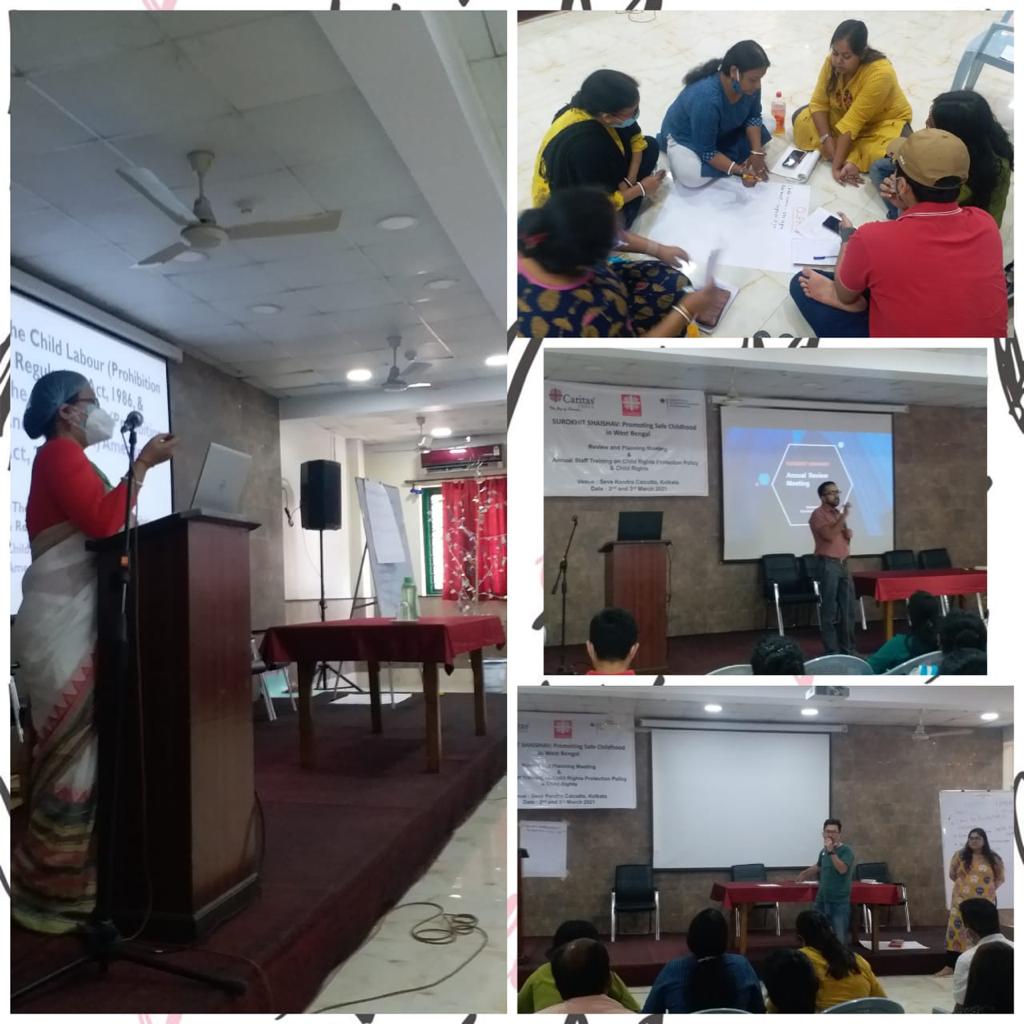Caritas India engages with Labour Department, Government of West Bengal to capacitate its Surokhit Shaishav Program Partner team on laws related to Prohibition and Regulation of Child Labour

2021 marks International Year for the Elimination of Child Labour (IYCL). In 2019, The United Nations General Assembly (UNGA) unanimously adopted a resolution declaring 2021 as the International Year for the Elimination of Child Labour.
Substantial progress towards the elimination of child labour has been achieved in recent years, largely because of intense advocacy and national mobilization backed by legislative and practical action. Between 2000 and 2016, there was a 38 per cent decrease in child labour globally. But progress has been uneven and insufficient; 152 million children are still in child labour.
The COVID19 pandemic has made the challenge of eliminating child labour by 2025 even harder. Millions of more children risk being pushed into child labour due to the COVID-19 crisis. This could lead to the first rise in child labour after 20 years of progress, according to a brief from the International Labour Organization (ILO) and UNICEF: COVID-19 and Child Labour: a time of crisis, a time to act.
In the light of the growing Child Rights crisis, Caritas India is acting towards the elimination of Child Labour in the state of West Bengal through its program Surokhit Shaishav.
Surokhit Shaishav: Promoting safe childhood in West Bengal, supported by Caritas Germany was launched in the last quarter of 2019 is implemented in the six most vulnerable districts covering 164 villages. It aims towards the abolition of child labour in all forms in the State of West Bengal by strengthening effective child protection systems and promoting children’s rights to education, inclusive development, and social participation.
To strengthen action towards prevention and elimination of child labour, a Capacity Building was organized for Partners on the laws related to Prohibition of Child Labour in March 2021. Ms. Manisha Bhattacharya, Joint Labour Commissioner- Government of West Bengal was invited as the Resource Person to conduct the session on CLPRA (Child Labour Prohibition and Regulation Amendment Act, 2016).

At the very onset, Ms. Manisha explained about India’s social context that every non-school going child is child labour. Reasons for child labour are a resultant of various factors such as poverty, illiteracy, population, ignorance, social taboos superstition, educational system and more so the employer’s preference and mindset. In light of this, she highlighted the important Articles of the Indian Constitution emphasizing on the Rights of the Children such as Art. 21 A which speaks of Right to Education, Art 24 on the prohibition of employment of a child in factories and A. 39 on the protection of children from involvement in economic activities and lastly on Art 45 which speaks on free and compulsory education up to 14 years. Further, the government interventions and policies related to children were discussed such as National Policy on Children, 1974, The Child Labour (Prohibition & Regulation) Act, 1986, National Policy on Child Labour,1987, National Child Labour Project,1988 and then Child Labour (Prohibition And Regulation) Amendment Act, 2016.

At the very onset, Ms. Manisha explained about India’s social context that every non-school going child is child labour. Reasons for child labour are a resultant of various factors such as poverty, illiteracy, population, ignorance, social taboos superstition, educational system and more so the employer’s preference and mindset. In light of this, she highlighted the important Articles of the Indian Constitution emphasizing on the Rights of the Children such as Art. 21 A which speaks of Right to Education, Art 24 on the prohibition of employment of a child in factories and A. 39 on the protection of children from involvement in economic activities and lastly on Art 45 which speaks on free and compulsory education up to 14 years. Further, the government interventions and policies related to children were discussed such as National Policy on Children, 1974, The Child Labour (Prohibition & Regulation) Act, 1986, National Policy on Child Labour,1987, National Child Labour Project,1988 and then Child Labour (Prohibition And Regulation) Amendment Act, 2016.
Upcoming News
Empowering the invisible workforce through holistic migrant welfare approach
Internal migration forms the backbone of India’s workforce, driving the growth of urban centers and...
LEARN MORENATURE-BASED SOLUTIONS: RECONNECTING COMMUNITIES WITH THE WISDOM OF NATURE
As climate threats intensify across India, Nature-Based Solutions (NbS) are emerging as powerful community-rooted strategies...
LEARN MOREStrengthening Humanitarian Expertise Through DG ECHO Training
Caritas India recently participated in a high-level capacity-building training organized by the Directorate-General for European...
LEARN MORE



 91 -11 - 2336 3390
91 -11 - 2336 3390  director@caritasindia.org
director@caritasindia.org 